"Neither in Tamil poem nor in the upanisadic passage … does the Lévi-Straussian opposition of nature-culture make sense; we see that the opposition itself is culture-bound. There is no other alternative to a culture vs. nature view; … culture is enclosed in nature, nature is reworked in culture, so that we cannot tell the difference. We have a nature-culture continuum that cancels the terms, confuses them even if we begin with them." - - Is there an Indian Way of Thinking? A. K. Ramanujan (1999).
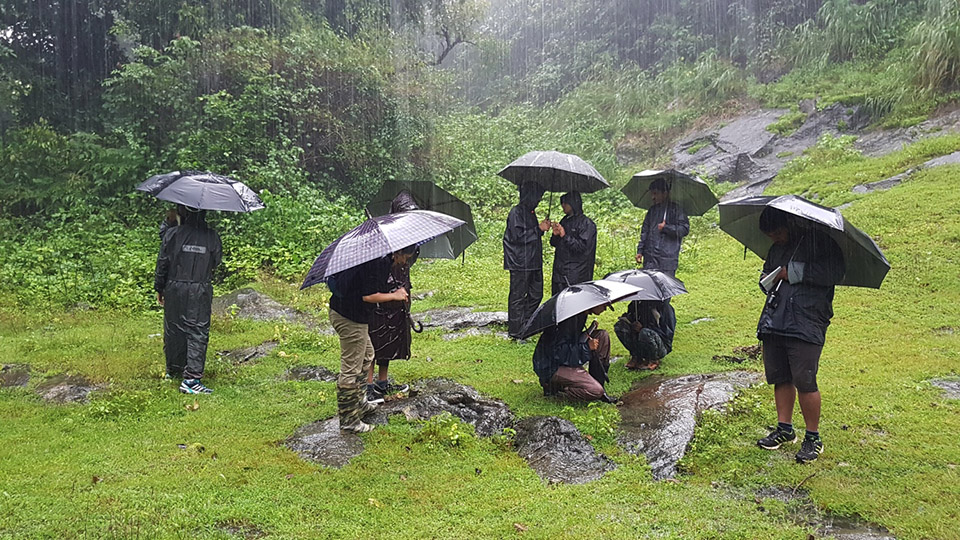
The wet season - Monsoon at Bisle Ghat, Karnataka. Photo Credit: Gururaja K.V.
Vision
Environment & Society envisions sensitive and meaningful responses to the dynamic changing environments and ecologies of the 21st Century. Environment & Society embraces multiple worldviews by creatively and critically examining the interrelationships between humans and their environment; how human and non-human inhabitants view and transform the world around them, and are in turn shaped by the environment through space, time, materials and cultures. Environment & Society is oriented towards engaging, imagining, conceiving and designing for healthy societies and ecosystems that are inclusive, responsive, and adaptive.
Environment & Society is a practice-based research course that draws from multiple fields including design and art practices, the natural, physical and social sciences, environmental humanities and philosophy, to examine these multifaceted issues. The course embraces a transdisciplinary approach bringing together ways of thinking and doing through examining notions of Development and Progress, Rights, Equity and Justice, and Ecology and Resilience.
The Masters of Arts in Environment & Society nurtures diversity of thought, as well as openness and care for deep engagements and investigations that begin with immersive experiences. Learners will be exposed to developing nuanced understandings of complexity, interdependency and embeddedness, as well as engendering a culture of creative practice and critical thought.
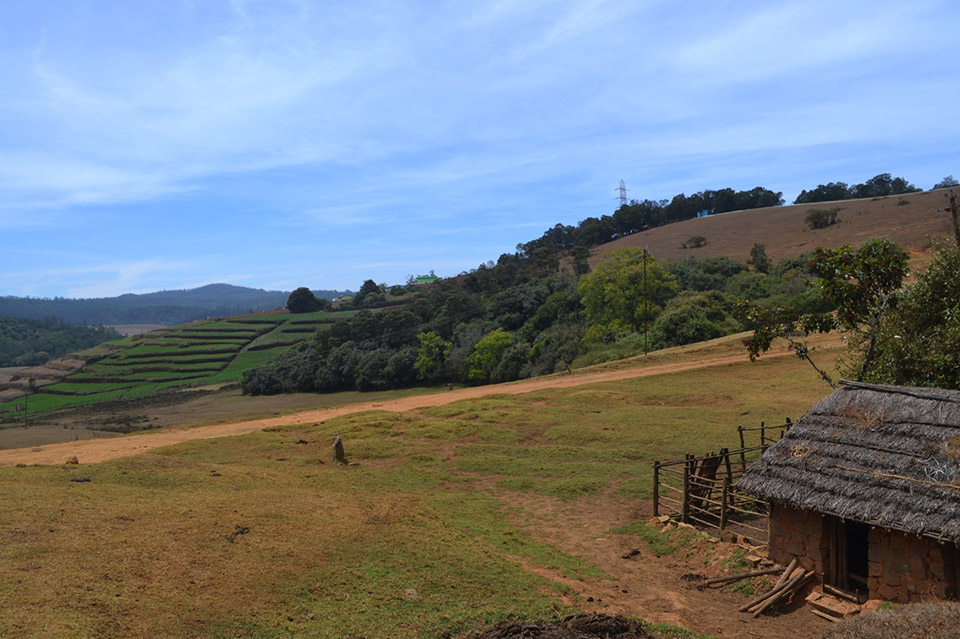
Toda dwelling and practices, Nilgiris, South India. Photo Credit: Deepta Sateesh.
Course Structure
- Disciplinary and Interdisciplinary studios
- Workshops
- Seminars
- Lines of Inquiries (Field work, Case Studies, Investigations, individual or Group Projects, Transdisciplinary Research)
- Theory and Understanding
- Independent Study
- Open Elective
- Practice
- Exhibitions
- Culminating Performances of Understanding (Portfolio, transdisciplinary research, projects, colloquium, capstone/dissertation)
- Knowledge Enhancement (ability or skills)
Learning Approach
Learning in Environment and Society is built to offer enriched and critical understandings, engagement and creativity, through synthesis, and will involve immersive field practices of various kinds, including more-than-human approaches. Learners will explore, investigate, construct, articulate, image and imagine that which will offer new thought, ideas and approaches, and may challenge the boundaries of disciplines, structures and hierarchies within the appropriate fields/domains, being creative and critical at the same time.
Program learning approaches include:
- Practical and conceptual understandings and approaches to linkages between nature and culture, current issues and discourses across the world
- Develop design-thinking methods for research, record, assemble and synthesize new kinds of data and media, and develop appropriate and context-sensitive responses.
- Collaborate amongst peers, practitioners and the larger global community
Capability Sets
The course fosters nurturing the following transdisciplinary, creative and critical capabilities:
- Engage in places with curiosity for new experiences in worlds in flux (immersion, reading dynamic places, understanding complexity)
- Engage in more-than-human worlds with openness (animals, plants, soils, weather, cosmological/mystical worlds and relationalities)
- Reimagine ways of engaging, recording, and depicting environment (data gathering and categories, interpretation, representation)
- Respond to the gap between the ground and policy-making (coevolve, codesign, cooperate and collaborate amongst experience, law and policy, advocacy, citizen-science, etc.)
- Generate new thoughts, forms of knowledge and interventions emerging from situated understandings of sensitive ecologies.
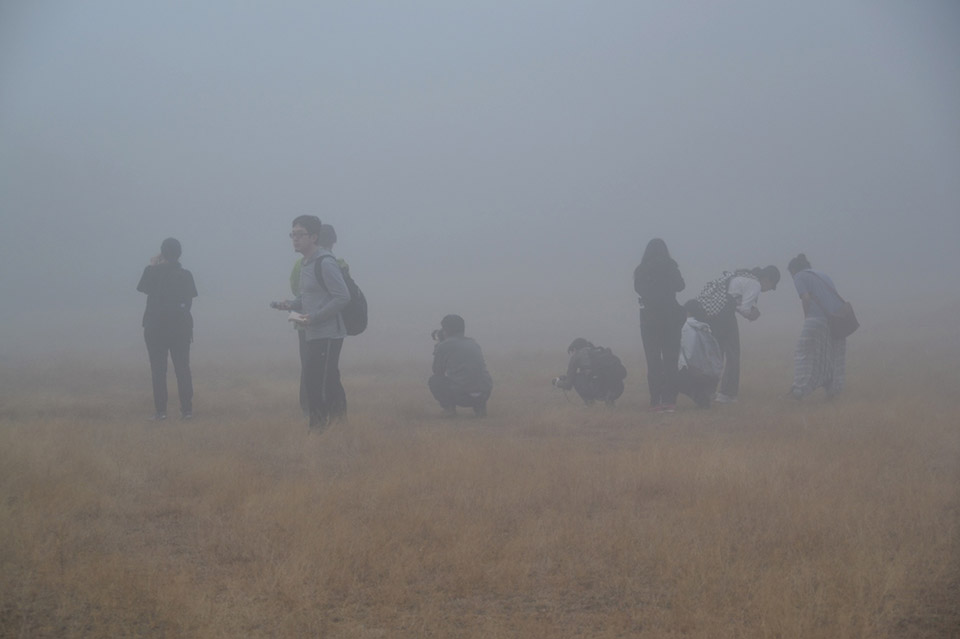
Immersive learning experiences to reimagine the monsoon terrain of the Western Ghats, Agumbe, South India. Photo Credit: Deepta Sateesh.
Opportunities
Graduates of the specialisation in Master of Arts in Environment & Society course will be equipped to work in:
- Academia and Environmental Research organisations: Working in the areas of conservation futures, community rights, climate justice advocacy, environmental policy, biodiversity conservation, animal welfare, new kinds of data and understandings of complexity.
- Non-Governmental Organizations: Working with NGOs, indigenous peoples and local communities on the ground, on ecological, social, cultural and economic issues.
- Non-formal Environment Sector: New creative industries/practices that work with NGOs, research organizations, in the areas of art and design communication (illustrators, story-tellers, big data analysts, GIS and conservation planning, etc.).
- Corporate/for-profit environment sector: Corporate social responsibility organizations and foundations focused on environmental concerns, global consulting groups working on environment, climate (and trading), resources, disasters, risk and resilience, etc.
- Public Sector: Policy design, research and advocacy with decision-makers, Ministry of Environment, Forests and Climate Change, Planning departments at the local, regional and national levels, etc.
- International Organisations: Environmental Humanities networks and Development and Conservation policy organisations such as IUCN, UNEP, UNDP, UNESCO, UNDESA.
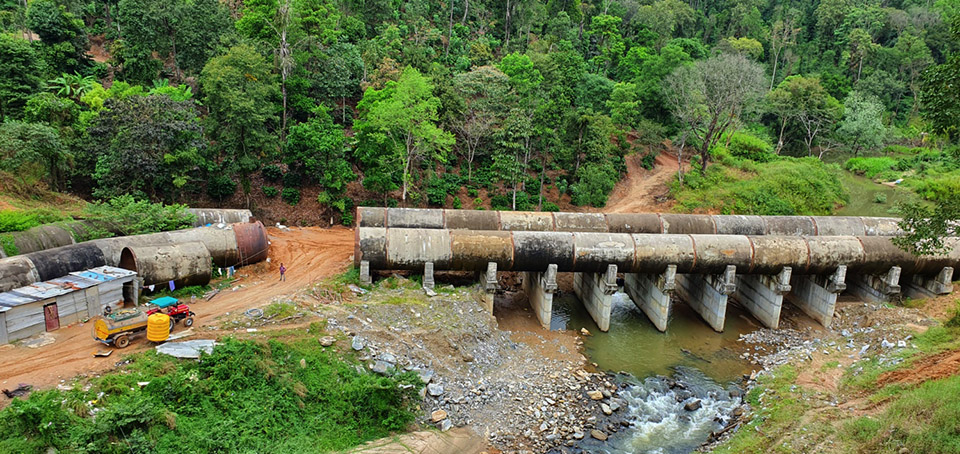
Flow of a different kind. Streams with natural flow are blocked, stored and pumped to places that are hundreds of kilometres away. Photo credit: Gururaja K.V.
People
Enquiries

Disciplinary Intersections
The M.A. in Environment and Society will draw from various disciplines and thereby provide a vibrant platform for students to engage with the above issues within a design environment:
Critical Geography
Political Science
Development Studies
History
Cultural Studies
Ecology and Environment
Policy Studies & Environmental Law
Urban Studies & Design
Industrial Arts & Design
Research – Art & Design
Research and Collaboration
Students enrolled in the program will have the opportunity to interact with the following labs in the form of an internship, workshop, or self-initiated immersion.
Bangalore Human Sciences Initiatives (BHSI)
Centre for Education, Research, Training and Development (CERTAD)
Center for Public History (CPH)
designEARTH lab
Frugal Design DESIS Lab
Impact Edge
Odde Research Center
Srishti Films
Srishti Labs
The Kabir Project
UNESCO Chair at Srishti
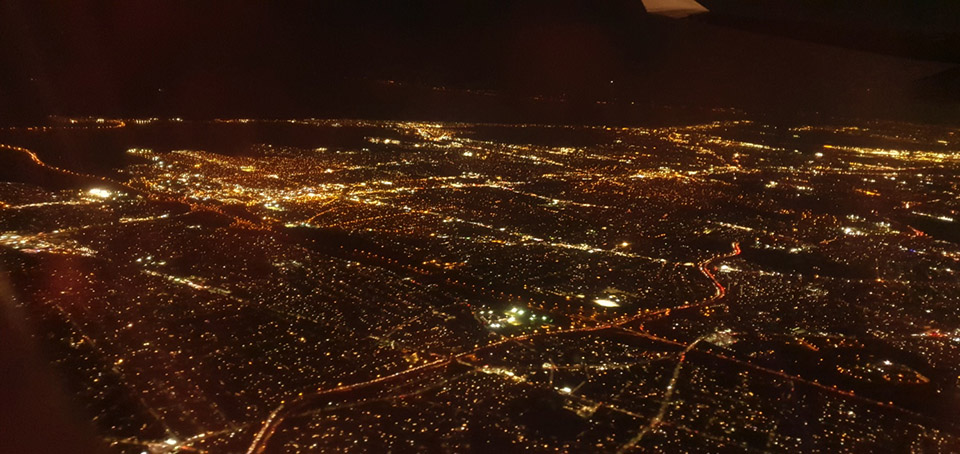
Nights are not dark anymore, New York City. Photo Credit: Gururaja K.V.
FAQs
As environmental issues escalate, with loss of biodiversity, knowledges and practices of inhabitants being increasingly aligned to the global market, mismanagement of resources, issues of climate change in the age of the anthropocene, there is a dire need to respond to these issues in a deeper and more meaningful way, and to reimagine the future of nature-culture relationships.
This course is about exploring, investigating, reading, understanding and engaging in the environment through creative practices and critical thinking, at the intersection of Design Research, Environmental Humanities and Ecological (natural, social and physical) Sciences. The MA in Environment & Society may lead to doctoral studies in the areas of environment and conservation futures.
Environment & Society is about rethinking and reimagining the world. Here, design and art practices are oriented towards new engagements, policies and methods, not only about problem-solving for environmental issues. This program is perfect for you if you are interested in developing deep understandings of complex worlds through immersive experiences, and are open to drawing from multiple disciplines, particularly at the intersection of design research, environmental humanities and the natural sciences. The course encourages learners with diverse backgrounds, whether art and design, science, law, humanities and/or philosophy.
The approach to Environment & Society is through practical doings, drawing from and valorising being in the field and working through studio practices, supported by critical scholarly works to engage in meaningful dialogues. You will have opportunities to work with researchers and communities on the ground including scientists, lawyers, conservationists, ecologists, design thinkers, policy-makers and government officers.
The MA in Environment & Society is positioned to enable careers in creative research, environmental advocacy and policy design. You will have the opportunity to work in creative industries such as landscape architecture, planning, storytelling and data invention, through multiple media and forms. Environment & Society is also oriented towards careers in policy and decision-making in governments and/or international environment organisations.
The program also allows you to apply into a PhD program in a related area. Students interested in continuing with a PhD program can apply for the Integrated PhD program. Further details can be found on our admissions page.
All admission and fee related information may be found on our admissions page.


